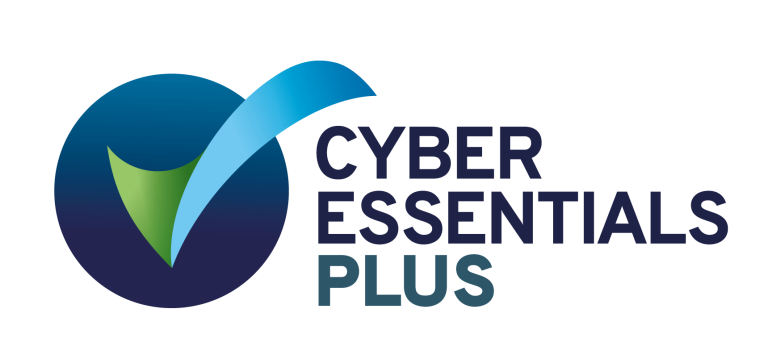The rise of hybrid working has transformed the landscape of many industries, and the legal and finance sectors are no exception. As firms in these fields adapt to the new work culture, managing a hybrid workforce effectively is becoming a top priority. Balancing the benefits of remote work with the need for office collaboration presents unique challenges. However, with the right strategies, these challenges can be turned into opportunities for growth and efficiency.
This article explores the key elements of managing hybrid teams within the legal and financial sectors, providing actionable strategies that ensure productivity, engagement, and compliance.
TL;DR:
Managing hybrid workforces in the legal and finance sectors requires a strategic blend of flexibility, effective communication, and the right technology. To succeed:
- Embrace flexible work models by offering tailored schedules and clear hybrid policies.
- Enhance communication through tools like Slack, Zoom, and project management platforms to ensure smooth collaboration.
- Leverage technology such as cloud storage, time tracking, and HR software to streamline operations and maintain data security.
- Build trust and accountability by focusing on results rather than hours worked, and encourage employee autonomy.
- Support employee wellbeing with regular check-ins, wellness programs, and team-building activities to prevent burnout.
By implementing these strategies, firms can optimise productivity, improve employee satisfaction, and navigate the challenges of managing hybrid teams effectively.

Embracing Flexible Work Models in the Legal and Finance Sectors
Why Flexibility Matters
Hybrid working has proven to be more than just a temporary solution; it’s the future of work. In the legal and finance industries, where traditional office environments have long been the norm, adapting to a hybrid model requires a shift in how work is structured and managed.
Employees in both sectors expect flexibility and a better work-life balance, and firms that fail to provide this may struggle to attract and retain top talent. The hybrid model offers flexibility in where work is completed, allowing employees to work from home some days while maintaining a physical office presence when needed for meetings, client consultations, or collaborative tasks.
Key Strategies for Flexibility:
- Clear Hybrid Policies: Develop clear policies that outline expectations for both remote and office work, ensuring all employees understand their responsibilities.
- Tailored Schedules: Offer employees the flexibility to set their own hours while ensuring coverage during core business hours.
- Task-Based Focus: Shift focus from hours worked to task completion, empowering employees to manage their own schedules and maximise productivity.
Actionable Tip: Conduct a survey to gather feedback from your employees on their preferences for hybrid work and create a tailored plan that aligns with their needs.
Enhancing Communication and Collaboration in a Hybrid Environment
Overcoming the Communication Gap
One of the biggest challenges of hybrid working is maintaining effective communication. With team members working remotely and in-office, it can be easy for information to get lost, and collaboration may suffer. In the legal and finance sectors, where attention to detail and collaboration are paramount, clear and consistent communication is essential to maintaining high standards of service.
Effective Communication Tools for Hybrid Work
- Project Management Platforms: Tools like Trello, Asana, or Monday.com help keep track of tasks, deadlines, and progress in real-time. This is especially valuable in the legal sector, where case management can be complex.
- Instant Messaging: Platforms like Slack or Microsoft Teams foster quick communication, reducing delays in decision-making.
- Video Conferencing: Zoom, Teams, and Google Meet allow for face-to-face communication, making remote meetings feel more personal and interactive.
Maintaining Collaboration Across Locations
- Regular Team Meetings: Schedule weekly or bi-weekly video check-ins to keep everyone on the same page. This ensures no one feels disconnected, and critical information is shared across both in-house and remote workers.
- Clear Communication Guidelines: Establish rules for how and when to communicate across channels, such as using emails for formal communication and instant messages for quick questions.
Actionable Tip: Create a communications policy that outlines preferred tools, response times, and best practices to streamline communication for all team members, regardless of location.
Leveraging Technology for Hybrid Workforce Management
Technology as the Backbone of Hybrid Work
Managing a hybrid workforce in the legal and finance sectors requires the use of technology that supports seamless operations. From cloud storage to workflow automation, investing in the right tools can improve efficiency, reduce administrative burdens, and foster a more productive work environment.
Essential Technologies for Hybrid Teams
Managing Compliance and Data Security
With sensitive information, especially in the finance and legal sectors, maintaining compliance with data protection regulations (such as GDPR) is crucial. Secure remote working practices must be implemented, and all employees should be trained on how to handle sensitive client data while working remotely.
Actionable Tip: Ensure that all remote workers use VPNs (Virtual Private Networks) and implement two-factor authentication to protect sensitive data and comply with regulatory standards.
- Cloud-Based Document Management: In legal and finance firms, document sharing and version control are critical. Google Drive, OneDrive, or specialised software like NetDocuments for legal firms ensures that all employees can access the latest documents securely, regardless of location.
- Time and Attendance Tracking: Use software like Toggl or Harvest to track remote employees’ hours and ensure accurate billing, especially in law firms or consultancy roles where billable hours are tracked.
- HR Software: Tools like Evalu-8 streamline HR functions such as performance reviews, payroll, and compliance, reducing the administrative load on HR teams.
Fostering a Culture of Trust and Accountability
Building Trust in a Hybrid Workforce
One of the most significant hurdles to effective hybrid working is overcoming the inherent trust issues that can arise when employees are not physically present in the office. Legal and finance firms often have a culture of micromanagement, but in a hybrid environment, it is essential to focus on results, not just hours worked.
Trust and Accountability Practices
- Outcome-Oriented Management: Focus on the completion of tasks and client outcomes rather than simply monitoring hours. Encourage employees to take ownership of their work.
- Transparent Feedback: Regularly provide constructive feedback to remote employees to ensure they feel included and valued, especially if they are working in isolation.
- Autonomy in Role: Give employees the freedom to manage their workload, which fosters a sense of responsibility and helps develop leadership qualities.
Actionable Tip: Set clear KPIs (Key Performance Indicators) for employees, and review them periodically to ensure accountability without micromanaging.
Employee Wellbeing in a Hybrid Workplace
Supporting Wellbeing in a Remote Environment
Employee wellbeing is an area that often gets overlooked in a hybrid setting, but it is crucial to maintaining productivity and engagement. In professional services, stress and burnout are common, and it is important to provide support for employees’ mental and physical health.
Wellbeing Strategies for Hybrid Teams
- Regular Wellbeing Check-ins: Implement frequent one-on-one meetings to discuss employee wellbeing and mental health.
- Wellness Programs: Offer virtual fitness sessions, mental health days, or wellness apps to support physical and mental health.
- Team Building Activities: Host virtual social events or off-site retreats to strengthen the team dynamic and combat feelings of isolation.
Actionable Tip: Set aside time for team members to focus on wellness during the week, whether through mental health breaks or physical activity.
Optimising the Hybrid Work Experience
Managing a hybrid workforce in the legal and finance sectors requires a strategic approach to flexibility, communication, technology, and wellbeing. By embracing these core principles and creating a supportive, well-equipped work environment, firms can not only improve productivity but also boost employee satisfaction and retention. As hybrid work continues to grow in popularity, those who adapt quickly will be best positioned to thrive in the future of work.
Here are the top five actionable takeaways from the article:
Define specific expectations for remote and office work to ensure all employees are aligned and understand their roles, schedules, and responsibilities.
Use platforms like Microsoft Teams, Slack, and Zoom to keep communication seamless and ensure regular updates across both in-office and remote teams.
Adopt tools such as Trello, Asana, and cloud-based document management systems to streamline workflows, track tasks, and maintain compliance with data protection regulations.
Shift from micromanaging hours to focusing on task completion and client results. Set clear KPIs (Key Performance Indicators) for employees to ensure accountability without constant supervision.
Implement wellbeing initiatives like mental health days, virtual fitness programmes, and team-building activities to combat burnout and support both physical and mental health in a hybrid work environment.


